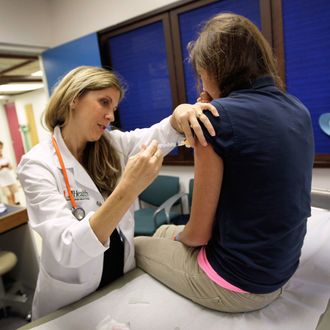
In 2007, the Australian government introduced a free Human Papillomavirus vaccine program for young women. The vaccine protects against certain types of cancer and genital warts, and since its introduction in Australia, a new study reports, the rate of patients presenting with genital warts has nosedived by 61 percent. That is a lot of money saved on medical treatment, not to mention prevented angst among patients.
The study, which reviewed more than a million patient encounters between 2000 and 2012, showed a significant year-on-year reduction in the management rate of genital warts in women aged 15-27 years since the vaccination program started. The findings are published in PLOS One journal.
“The results show that the program has been a widespread success,” said lead author of the study Christopher Harrison of the University of Sydney.
The HPV vaccination program was introduced in 2007, and the rate of genital wart presentation fell dramatically from 4.33 per 1,000 encounters pre-program (2002-2006) to 1.67 per 1,000 encounters in the post-program period (2008-2012).
This result is in line with what we know so far about the vaccine’s success in the United States and elsewhere. Given that widespread vaccination is so clearly an excellent thing from a public-health perspective, thank goodness there aren’t any outlandish cultural panics about vaccination depressing the rates at which people get inoculated.




